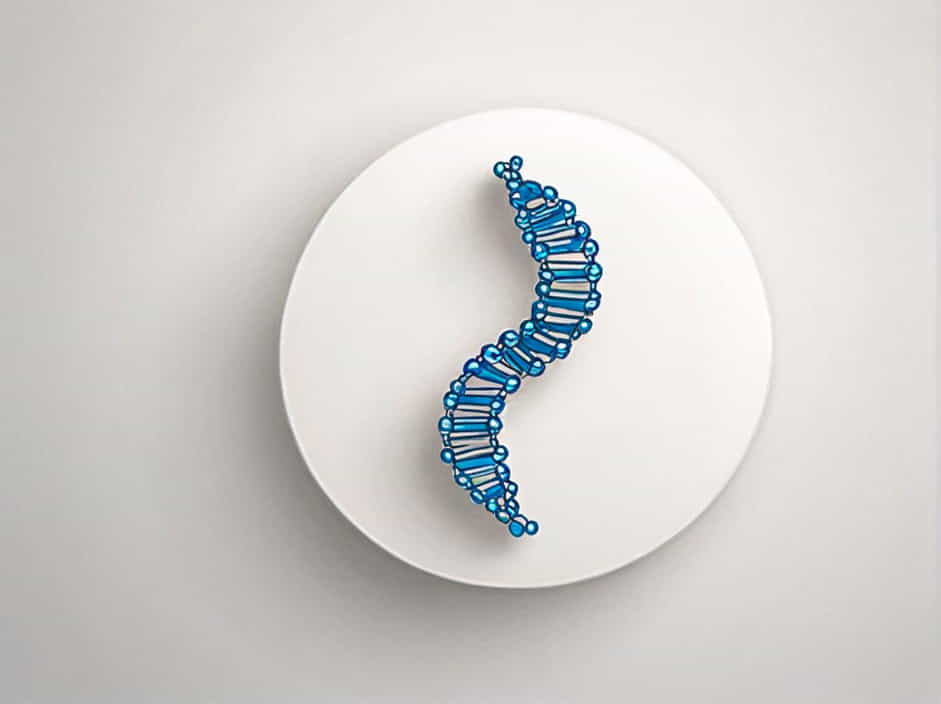DNA (Deoxyribonucleic Acid) is the blueprint of life, carrying genetic instructions for the growth, development, and function of all living organisms. One of the most fascinating aspects of DNA is its double-helix structure, which was discovered by James Watson and Francis Crick in 1953.
A crucial concept in understanding DNA is one helical turn of a DNA strand. But what does this mean? How long is a single turn of DNA, and why is it important in biology and genetics?
This topic explores the details of one helical turn of DNA, including its length, structure, components, and role in genetic processes.
What Is One Helical Turn of a DNA Strand?
A helical turn refers to the distance it takes for the DNA double helix to complete one full 360-degree rotation.
In the most common DNA structure, known as B-DNA, one helical turn contains:
- 10.5 base pairs (on average)
- A length of approximately 3.4 nanometers (nm)
- A helical twist of about 36 degrees per base pair
This structure provides stability and efficiency for storing genetic information while allowing easy access for biological processes like replication and transcription.
Key Measurements of One Helical Turn of DNA
1. Base Pairs per Helical Turn
- In B-DNA, which is the most common form in living cells, one complete turn consists of 10.5 base pairs.
- In other forms like A-DNA and Z-DNA, the number of base pairs per turn can vary.
2. Length of One Helical Turn
- The length of one full turn of B-DNA is 3.4 nm (nanometers).
- Each base pair contributes approximately 0.34 nm to the length.
3. Diameter of the DNA Helix
- The width (diameter) of the double helix is 2 nm.
- This width is maintained by hydrogen bonds between complementary base pairs (A-T and G-C).
Components of One Helical Turn
1. Sugar-Phosphate Backbone
The backbone of DNA consists of deoxyribose sugar and phosphate groups, which form a strong, stable structure.
2. Base Pairs (Nucleotide Pairs)
The rungs of the DNA ladder are made up of base pairs:
- Adenine (A) pairs with Thymine (T) (via 2 hydrogen bonds)
- Guanine (G) pairs with Cytosine (C) (via 3 hydrogen bonds)
These base pairs provide the genetic code that determines the characteristics of an organism.
3. Major and Minor Grooves
- Major groove: The larger gap in the DNA helix, where proteins often bind for replication and transcription.
- Minor groove: The smaller gap, which also plays a role in protein-DNA interactions.
Why Is One Helical Turn of DNA Important?
1. Essential for DNA Stability
The double-helical structure ensures stability and protection of genetic information.
2. Plays a Role in DNA Replication
During replication, enzymes like DNA helicase and DNA polymerase interact with the DNA helix, making it crucial for the process.
3. Affects Gene Expression and Regulation
DNA-binding proteins recognize specific base pair sequences within the major and minor grooves, regulating gene activity.
4. Determines DNA Packing in Chromosomes
The helical nature helps DNA wrap around histone proteins, allowing compact storage inside the nucleus.
Different Forms of DNA Helix
DNA can adopt different helical structures under various conditions:
| Type of DNA | Base Pairs per Turn | Helical Turn Length | Direction |
|---|---|---|---|
| B-DNA (Common form) | 10.5 bp | 3.4 nm | Right-handed |
| A-DNA (Dehydrated form) | 11 bp | 2.8 nm | Right-handed |
| Z-DNA (Rare form) | 12 bp | 4.5 nm | Left-handed |
B-DNA is the most common form in living organisms, while A-DNA and Z-DNA appear under special conditions.
How One Helical Turn Affects Genetic Processes
1. DNA Replication
- Helicase enzyme unwinds the DNA at replication origins.
- One helical turn helps stabilize the replication fork.
2. Transcription (RNA Synthesis)
- RNA polymerase binds to DNA and reads one helical turn at a time to create RNA.
- Major and minor grooves play a role in transcription factor binding.
3. Mutation and DNA Repair
- A single base change within one helical turn can cause genetic mutations.
- DNA repair enzymes recognize distortions in the helical structure.
Comparison: One Helical Turn in B-DNA vs. A-DNA vs. Z-DNA
| Feature | B-DNA (Common) | A-DNA (Dehydrated) | Z-DNA (Rare) |
|---|---|---|---|
| Base Pairs per Turn | 10.5 | 11 | 12 |
| Turn Length | 3.4 nm | 2.8 nm | 4.5 nm |
| Direction | Right-handed | Right-handed | Left-handed |
| Role in Biology | Genetic storage | Found in RNA-DNA hybrids | Involved in gene regulation |
Each form has unique properties that influence how DNA interacts with proteins and enzymes.
FAQs About One Helical Turn of DNA
1. How many base pairs are in one full turn of DNA?
There are about 10.5 base pairs per turn in B-DNA.
2. How long is one helical turn of DNA?
One full turn is 3.4 nanometers (nm) in length.
3. Why does DNA form a helix?
The twisting shape allows DNA to:
- Store genetic information efficiently
- Maintain structural stability
- Interact with enzymes for replication and transcription
4. What happens if DNA structure is altered?
Changes in the helix structure can lead to mutations, affecting protein synthesis and possibly causing diseases.
5. Can DNA exist in other shapes?
Yes, A-DNA and Z-DNA exist under special conditions, but B-DNA is the most common.
Understanding one helical turn of DNA is essential for grasping how genetic material functions.
Key Takeaways:
✔ One helical turn = 10.5 base pairs = 3.4 nm in B-DNA.
✔ DNA’s double-helix structure provides stability and genetic storage.
✔ Helical turns play a role in replication, transcription, and gene regulation.
✔ B-DNA, A-DNA, and Z-DNA differ in structure and function.
This fundamental concept is vital for biology, genetics, and medical research, shaping our understanding of life at the molecular level.
